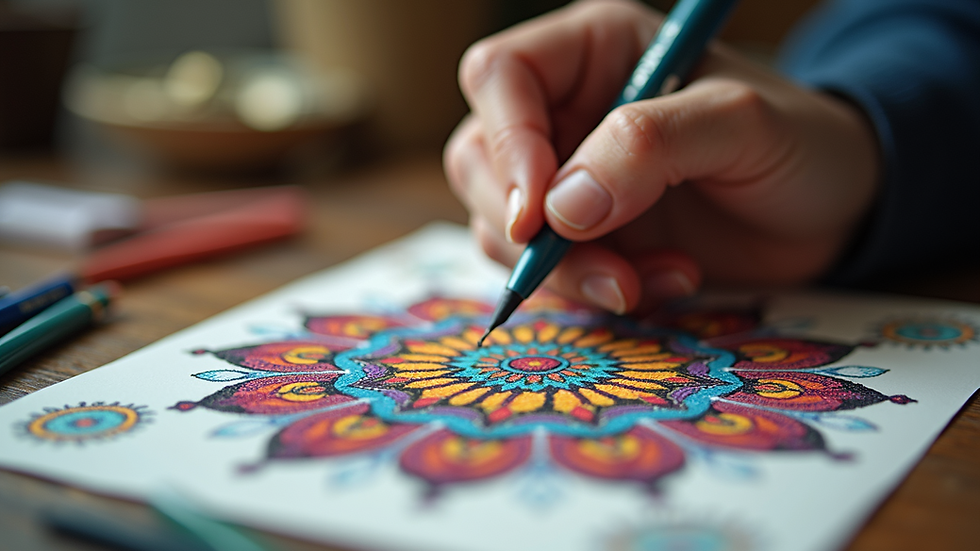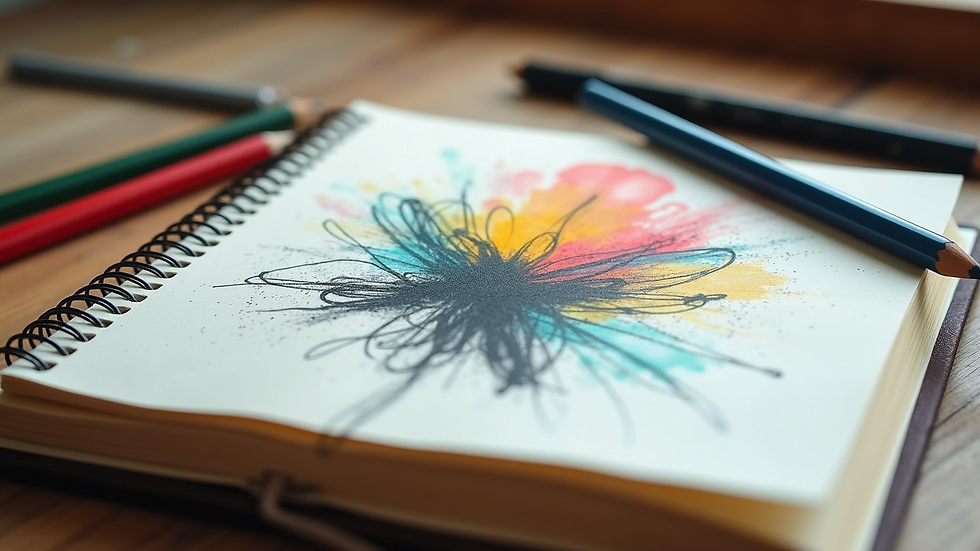How Creativity Can Boost Your Mental Health
- rootcapcounseling

- Sep 6
- 4 min read
Creativity is often seen as a fun hobby or a way to pass time. However, it holds much more power than just entertainment. Engaging in creative activities can significantly improve your mental well-being. This article explores how creativity and wellness are connected and offers practical ways to use creativity to enhance your mental health.
The Link Between Creativity and Wellness
Creativity is a natural outlet for expressing emotions and thoughts that might be difficult to verbalize. When you engage in creative activities like painting, writing, or playing music, your brain releases dopamine, a chemical associated with pleasure and motivation. This release can help reduce stress and anxiety, making you feel calmer and more focused.
Moreover, creative expression encourages mindfulness. When you focus on creating something, you enter a state of flow where worries fade away, and you become fully present. This state is beneficial for mental health because it helps break the cycle of negative thinking.
Practical tips to boost creativity and wellness:
Set aside 15-30 minutes daily for a creative activity.
Try different forms of creativity to find what resonates with you.
Use creativity as a way to process emotions, such as journaling about your day.
Join a local art or writing group to connect with others.

How Creativity Helps Manage Stress and Anxiety
Stress and anxiety are common mental health challenges that affect many people. Creativity offers a healthy way to manage these feelings. When you create, your mind shifts focus from stressors to the task at hand. This distraction can lower cortisol levels, the hormone responsible for stress.
Creative activities also provide a sense of accomplishment. Completing a project, no matter how small, boosts self-esteem and confidence. This positive reinforcement can help combat feelings of helplessness often linked to anxiety.
Examples of creative stress management:
Coloring books - Adult coloring books are designed to be relaxing and easy to use.
Music therapy - Playing an instrument or listening to calming music can soothe the mind.
Creative writing - Writing stories or poetry allows you to explore and release emotions.
Incorporating these activities into your routine can create a buffer against daily stress.

What is the hardest mental illness to live with?
Mental illnesses vary widely in their symptoms and impact. Some conditions are more challenging to live with due to their severity, chronic nature, or the stigma attached to them. Disorders such as schizophrenia, bipolar disorder, and severe depression are often considered among the hardest to manage.
Living with these illnesses requires ongoing treatment, support, and coping strategies. Creativity can play a supportive role by providing an emotional outlet and a way to communicate experiences that are difficult to express verbally.
For example, art therapy has been shown to help individuals with schizophrenia by improving their emotional regulation and social skills. Similarly, creative writing can help those with bipolar disorder track mood changes and express feelings during different phases.
Understanding the challenges of these illnesses highlights the importance of integrating creative approaches into mental health care.

How to Incorporate Creativity into Your Daily Life
Adding creativity to your daily routine does not require special skills or expensive materials. The key is to make it enjoyable and stress-free. Here are some simple ways to get started:
Morning pages: Write three pages of free-flowing thoughts every morning to clear your mind.
Photography walks: Take your phone or camera and capture interesting scenes during a walk.
DIY crafts: Use household items to create something new, like homemade cards or decorations.
Cooking creatively: Experiment with new recipes or presentation styles in the kitchen.
Remember, the goal is not to produce perfect art but to engage your mind in a creative process. This practice can improve your mood and mental clarity.
If you want to explore more about how creativity can support your mental health, check out this resource on mental health creativity.
The Long-Term Benefits of Creativity on Mental Health
Engaging in creative activities regularly can lead to lasting improvements in mental health. Studies show that people who practice creativity experience:
Better emotional resilience
Increased problem-solving skills
Enhanced self-awareness
Improved social connections
These benefits contribute to overall wellness and can reduce the risk of developing mental health disorders. Creativity also encourages a growth mindset, helping you view challenges as opportunities to learn and grow.
To maximize these benefits, consider setting creative goals, such as completing a painting each month or writing a short story every week. Tracking your progress can motivate you and provide a sense of achievement.

Embracing Creativity for a Healthier Mind
Creativity is a powerful tool for enhancing mental health and wellness. Whether you paint, write, craft, or simply doodle, engaging in creative activities can reduce stress, improve mood, and foster emotional healing. By making creativity a regular part of your life, you invest in your mental well-being and open doors to new ways of understanding yourself.
Start small, be patient, and enjoy the process. Your mind will thank you for it.



Comments